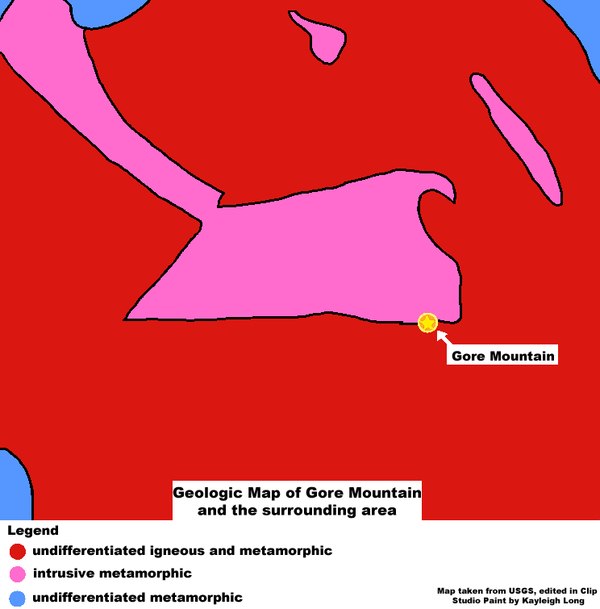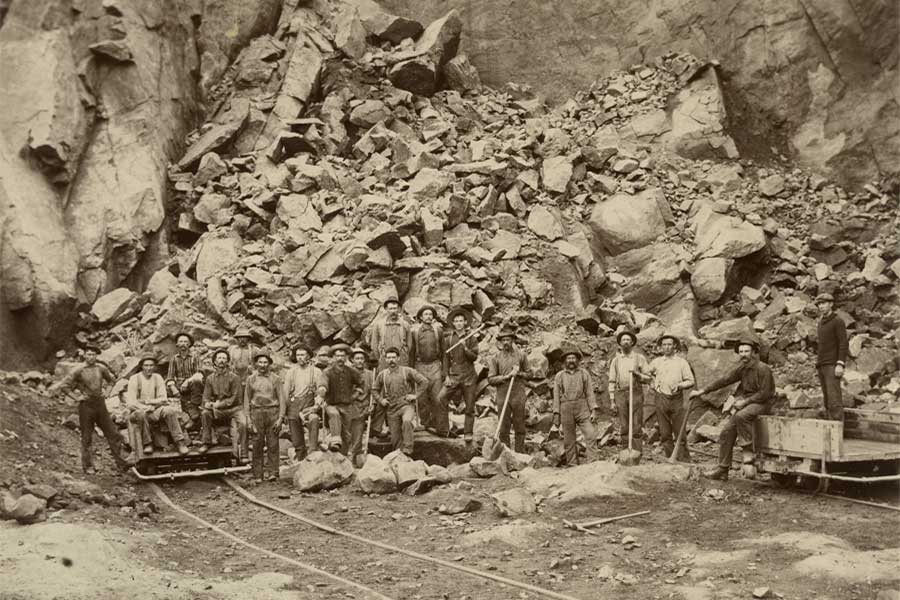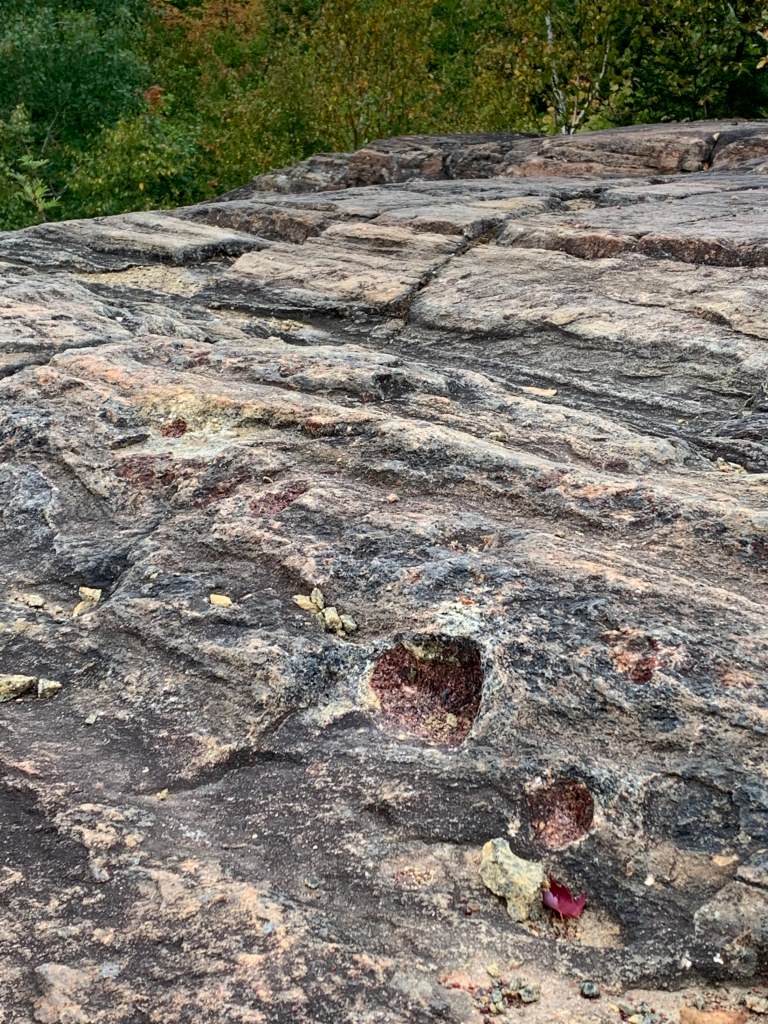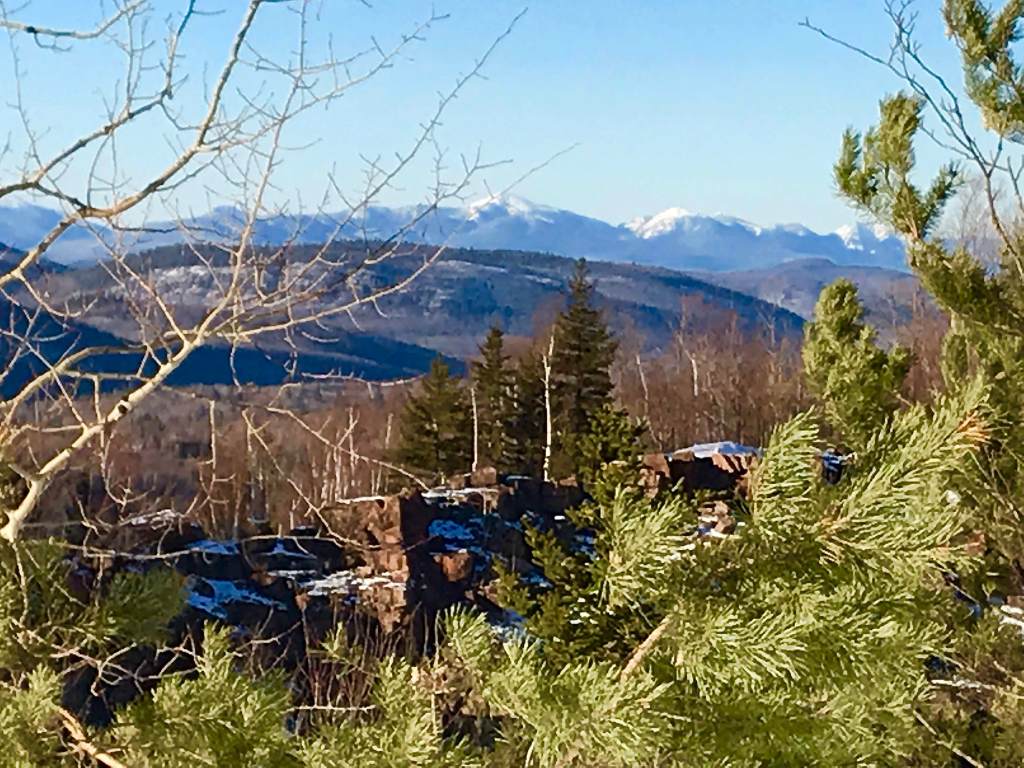
Judy Brown’s red Subaru Outback has a simple vanity plate. It says “Garnets”. At the end of her road is her sign: “J+J Brown, Garnet Studio”. Garnet jewelry has been a thread through her rich life. Her garnet jewelry is ubiquitous in the Adirondacks, in every gift shop from Glens Falls to the Champlain Valley. Judy is like a community den mother, one of those people you are lucky to meet if, like me, you are new to a place. She tends to the town garden in nearby North Creek, recruits volunteer weeders, takes in stray dogs, organizes meditations, opens her home to neighbors, makes gallons of maple syrup every winter, and makes jewelry.

I had paid no attention to garnets until I moved to the Adirondacks. They were simply a blood-red stone that was cheaper than a ruby, something you might buy for a January birthday. But here in North River, pick up a rock and you might see splotches of deep red crystals. On hikes, I find myself inspecting the red circles embedded in the mottled grey boulders that are scattered in the woods and line the creeks. Garnets may cast an unexpected shimmer on a mountain trail or make the sand on Thirteenth Lake sparkle. How extraordinary, I thought, we have gems under our feet!

I often walk up to the old Hooper Garnet Mine near my house, the site of the first garnet mining in the area but long abandoned. Remnants of 19th century garnet mining survive—the dark wooden miners’ cabins that are now vacation homes, and Frank Hooper’s grand house that he built for his wife, to convince her to live through the harsh Adirondack winters. Since the time of Frank Hooper, garnets have been mined here—not for jewelry but for industrial abrasives like sandpaper.

By some design or accident of Nature, the garnets that come out of nearby Gore Mountain have the largest and hardest crystals in the world, and the neighboring mountains reveal similar stones. It was in the 19th century that enterprising engineers and entrepreneurs tapped into the economic potential of the glistening red stones. [Geologist alert: if you can understand sentences like this, you can understand how, in the dark recesses of geologic time, that North River garnets came to be unique: Both single and multigrain U-Pb zircon thermal ionization mass spectrometry (TIMS) as well as sensitive high resolution ion microprobe (SHRIMP ll) dating of two suites of Adirondack granites have yielded ages constraining the principal tectonomagmatic events of the Ottawan Orogeny to the interval ca 1090–1035 Ma.)]

Judy, whose family owned the nearby Garnet Hill Lodge in the 1960s, has been collecting the glistening red stones since childhood. I was curious about this world that had revolved around the beautiful red stones. “This may sound silly,” I asked her once, “but how do you feel about garnets?’ She paused for a moment and smiled, as if she had been waiting for someone to ask her this question for a long time. “I feel at home,” she replied, “garnets make me feel grounded.”

For most of the 20th century, the Barton Garnet Mine was a short distance from where it is now. For 100 years, that patch of mountain was a mining community, fourteen families living in modest clapboard homes nestled in the dense forest. At the end of Barton Mines road, just before the gate where the workers filed in, is a rock and mineral shop The high school kids who lived up there ran the shop.

That’s where Judy met her husband, Joe. Joe was a “mine kid”. His father and grandfather were pit foremen and had always lived at the top of Barton Mines Road. Joe and three others, Peter Barton, Jimmy Joe Leonard, and Nate Waldron ran the shop and put themselves through college with the earnings.

Judy was already fascinated with the red stones. She bought polished garnets from one of the miners who saved the bits of stone that did not become sandpaper. She began to make jewelry. When she and Joe got married, the first thing they bought was a faceting machine. Joe would work into the night cutting stones into gems while Judy set them into silver earrings and necklaces, garnets mixed with shapes of pine trees and skis and animals and flowers or simply just garnets. They still do that in their Garnet Studio on Ruby Mountain. (You can see their work and learn more about their jewelry here

There are places outside the Barton Mines that still lure visitors with the sense of discovery a miner might have felt 150 years ago. A short walk from my house are the remnants of an early garnet mine, long abandoned—the Hooper Garnet Mine. At the end of a short rocky climb there, the landscape opens up and a first-time visitor might be astonished by the cliffs of red rocks that form a half circle around an overgrown meadow. The jagged outcroppings of red rock evoke the Southwest more than the North Country. They are red not from garnets but from iron, filtered through the rock for millennia. But the garnet crystals are everywhere, embedded in the boulders like polka dots. On a warm summer day, I might hear the incessant clanging of a hammer on a chisel. Bang! Bang! Rock hounds, parents seeking to entertain children, and the merely curious all come to Hoopers Mine to chip away at the boulders, hoping to dislodge a heady piece of garnet.

Sometimes, when I am with my grandchildren, we also take a hammer and chisel to Hooper Mine to hack away at the circles of glittering red that have been hacked at for years. We are unlikely to find anything of value, not likely to break open a slab of gneiss to find a red crystal as large as my fist. And yet, the tantalizing possibility of discovery is seductive.

Sometimes I just go to Hooper Mine for the sweeping view– the valley below, the layers of trees and the undulating curves of the land. In the distance, I can see the sand-colored tailings left exposed on Ruby Mountain by the current operations of Barton Mine. They look like a scar on the mountain top, trees cut down, the insides of the earth exposed. In the hundred years since Frank Hooper and his men chipped away at these boulders, garnet mining has become louder and mechanized.

In recent years the garnet mining from the Barton Mine operation has become intrusive and polluting. Dust from the blasting has settled into the creeks and has drifted into the homes. The neighbors have started a dialogue with the mine owners as they seek a new permit from the State of New York. And that will be a subject for another post: how the people who love the Adirondacks for its beauty, its history, its people and its geology, will try to figure out a way to co-exist.

In the meantime, Judy Brown will be moving her garnet studio to the historic Barton Mines site in North River in July 2022. Read more about the historic site here. If you are in the Adirondacks in the summer, it’s worth a trip to learn about a piece of Adirondack history and, perhaps, buy some stones and garnet jewelry.



I love this Sharon. A great blend of geography, geology, ecology, local history, and human relationships and activity. Well done, and thank you!!
LikeLike
Greetings. Years and years ago I went to summer camp (Camp Baco) in the Adirondacks. I remember garnets from my time there.
LikeLike
That’s not too far from where I live. There is a stream north of Camp Baco that is called the Opalescent River that is supposed to have lots of wonderful stones. Thanks for sharing the memory!
LikeLiked by 1 person
Thanks Nancy. For years I’ve been trying to write about why I love the Adirondacks and I think–beyond the obvious beauty– it’s in the details and the stories.
LikeLike
Very nice, Sharon. You’ve really settled in up there.
LikeLike
I grew up at Barton Mines and know Joe and Judy. One of my favorite pieces of jewelry is an emerald cut Garnet from one of the pits at the mine. Faceted by Joe!!! Worked many summers with him at the mineral shop and bought my first car from my summer earnings!! Many stories were generated to keep the visitors entertained while on their garnet collecting tour….hahaha!!! , Lovely article about the mine and it`s history including J&J`s. Also the history on the Hooper Mine. Know people who worked there and who also learned to ski there. It was a nice trip down memory lane for me. Thank you. Xoxo
LikeLike
Thank you for this background! Wonderful
LikeLike
Another brief comment: just read a bit about you that you provided. I live in the Philadelphia area and have for past 40yrs- Delco!!! The Barton family that started the mine were originally from Philly. I love to come home to the Adirondacks and back home from there to my home here.
LikeLike
Let me know when you are in these parts!
LikeLike